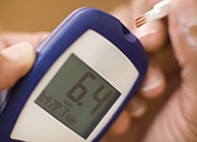Peer Reviewed
Feature Article Endocrinology and metabolism
KISS: ‘keep insulin safe and simple’ Part 4: titrating insulin in type 2 diabetes
Abstract
This last article in a short series on insulin therapy in type 2 diabetes uses a case study approach to discuss the typical progession of insulin therapy in type 2 diabetes, and offers advice on titrating insulin to keep blood glucose levels and A1c on target.
Key Points
- About 50% of patients with type 2 diabetes will require insulin within six years of diagnosis.
- Most people with type 2 diabetes begin insulin therapy with one daily dose of basal insulin and continue taking oral hypoglycaemic agents. As the diabetes progresses, it becomes necessary to introduce a second daily dose of basal insulin, and then doses of bolus insulin at mealtimes.
- A somewhat simplified protocol for insulin therapy is to: first fix the fasting blood glucose level (BGL) (is bedtime basal insulin needed?); then tackle the evening BGL (is breakfast basal insulin needed?); treat any high postprandial BGLs (is a breakfast, lunchtime or teatime bolus insulin needed?); and check the A1c (is the A1c on target, or are there hidden hyperglycaemic episodes in the late morning, in the evening or at night?)
Purchase the PDF version of this article
Already a subscriber? Login here.

